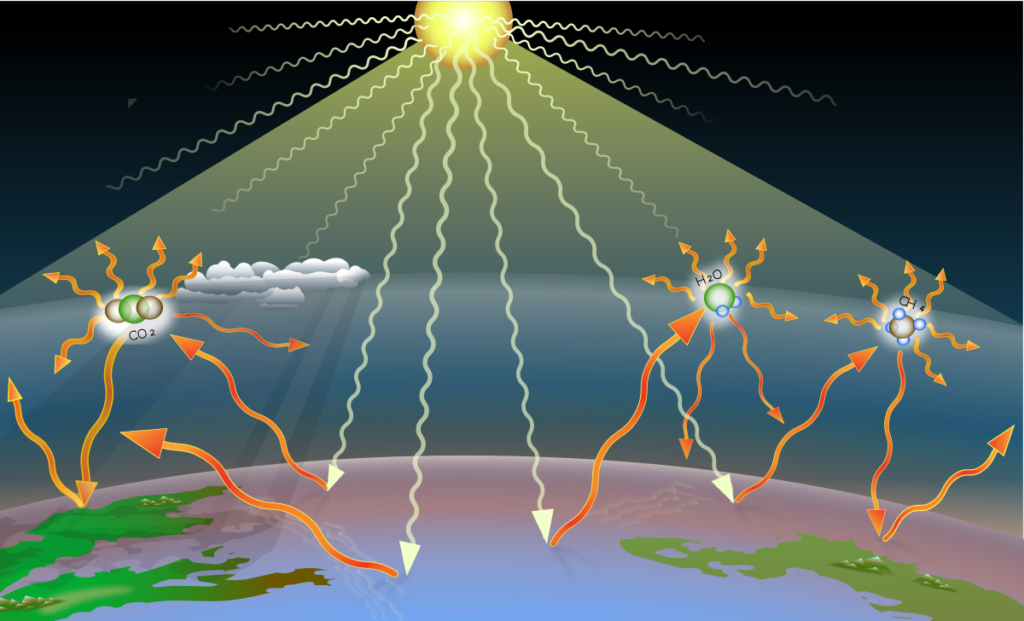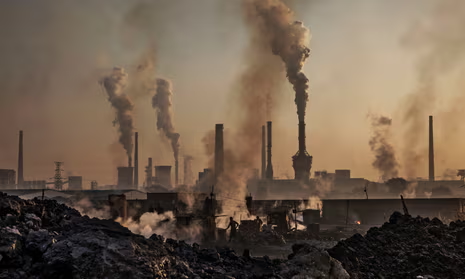Navigating the Impact of Greenhouse Gases: Understanding Emissions and Solutions

Greenhouse gases trap heat in the atmosphere, contributing to global warming. This section discusses the main greenhouse gases, their emissions, and their removal from the atmosphere.
Carbon Dioxide (CO2)
Carbon dioxide enters the atmosphere through:
- Burning fossil fuels (coal, natural gas, oil)
- Burning solid waste and biological materials (trees, other biomass)
- Certain chemical reactions (e.g., cement production)
CO2 is removed from the atmosphere when absorbed by plants during the biological carbon cycle.
Methane (CH4)
Methane is emitted during:
- Production and transport of coal, natural gas, and oil
- Livestock and other agricultural activities
- Land use and organic waste decay in landfills
Nitrous Oxide (N2O)
Nitrous oxide emissions come from:
- Agricultural, land use, and industrial activities
- Combustion of fossil fuels and solid waste
- Wastewater treatment processes
Fluorinated Gases
These include hydrofluorocarbons, perfluorocarbons, sulfur hexafluoride, and nitrogen trifluoride. These synthetic gases are used in various household, commercial, and industrial applications. They are potent greenhouse gases, often referred to as high-GWP (Global Warming Potential) gases, due to their high heat-trapping efficiency compared to CO2.
Other Greenhouse Gases
Other compounds, such as water vapor and ground-level ozone, also impact the climate.

Factors Affecting Climate Impact of Greenhouse Gases
Abundance in the Atmosphere
The concentration of greenhouse gas in the atmosphere depends on the volume of emissions. Concentrations are measured in parts per million (ppm), parts per billion (ppb), and parts per trillion (ppt).
Atmospheric Lifetime
Different greenhouse gases remain in the atmosphere for varying durations, from a few years to thousands of years, allowing them to mix globally.
Impact on Atmospheric Warming
Each gas’s warming effect is quantified by its Global Warming Potential (GWP), which measures the energy absorbed by the emissions of 1 ton of a gas over a specific period, usually 100 years, relative to 1 ton of CO2.

Carbon Dioxide Emissions
Properties of Carbon Dioxide
- Chemical Formula: CO2
- Lifetime in Atmosphere: Complex and varies due to geochemical and biological processes
- Global Warming Potential (100-year): 1
In 2022, CO2 made up 80% of U.S. greenhouse gas emissions from human activities. The main sources are:
- Transportation: 35% of U.S. CO2 emissions from burning fossil fuels like gasoline and diesel.
- Electricity: 30% of U.S. CO2 emissions from fossil fuel combustion for power generation.
- Industry: 16% of U.S. CO2 emissions from fossil fuel consumption and chemical processes.
- Land Use, Land-Use Change, and Forestry (LULUCF): Acts as a net CO2 sink, offsetting 13% of emissions.

Emission Trends and Reduction Strategies
From 1990 to 2022, U.S. CO2 emissions decreased by 2%, influenced by factors such as population and economic growth, energy prices, and technological changes. In 2022, emissions rose due to increased energy use post-COVID-19 and higher coal use in power generation.
To reduce CO2 emissions, decreasing fossil fuel consumption is crucial. Strategies for reduction apply across homes, businesses, industries, and transportation sectors. For more information, refer to the Climate Change Indicators page.




